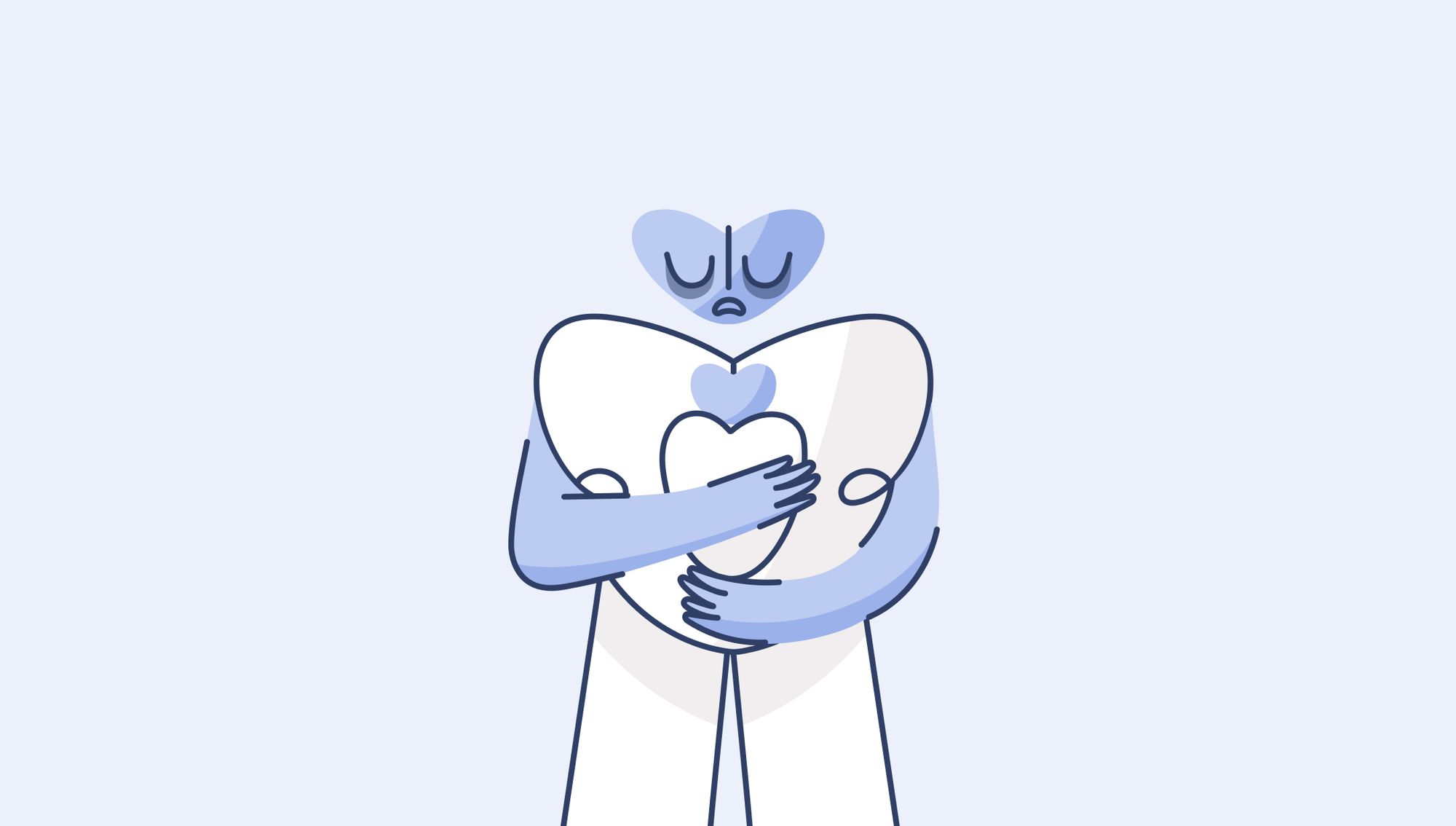Preventing post-partum depression and maternal burn-out
The arrival of a child in the home is often associated with profound upheaval in a couple’s life. These upheavals can be of various kinds and appear at different times following the birth of the child. While baby blues is widely accepted in society, two other pathologies with potentially serious consequences are the focus of Heloa’s research: post-partum depression and parental burnout.
📍 Early detection of post-partum depression

There are around 720,000 births a year in France.
For each new parent, parenthood implies radical changes of every kind: biological, behavioral, psychological, etc.
Young mothers, for example, will experience a major hormonal imbalance when their child is born [1] (lower progesterone levels, etc.). On top of this, organizational changes (mourning the pregnancy, confronting the real child, etc.) and fatigue linked to sleep reorganization can lead to psychological instability (negative thoughts, uneasiness, crying spells, depression, etc.).
This is known as baby blues or post-partum depression:
Baby blues affect 50% to 80% of women who give birth. It should be distinguished from post-partum depression, which affects 10-20% in the 4 weeks following childbirth. The baby blues usually last from a few hours to a few days, and are accompanied by emotional instability, crying spells, anxiety and so on.
While baby-blues is not correlated with post-partum depression, it is important to be able to detect it if it becomes established over time (beyond one week to 10 days).
🎯 This is one of Heloa’s ambitions: by means of a questionnaire given to parents a few days after the birth of their child, Heloa focuses on this pivotal period between the end of baby-blues and its eventual onset, which can give way to post-partum depression.
Post-partum depression is an illness ****which can appear during the year following childbirth. When weak signals such as loss of pleasure, negative thoughts, change in appetite, difficulty falling asleep, lack of energy set in for at least two weeks, we speak of post-partum depression.
Although in half of all cases there is spontaneous recovery within the first year, post-partum depression is the leading cause of maternal mortality (around 50 women commit suicide every year). The risk of infanticide must also be rigorously assessed [2].
Post-partum depression doesn’t just affect mothers, it can also affect fathers. It is estimated that some 70,000 fathers in France [3] suffer from it every year.
However, these figures are underestimated, as post-partum depression is still an under-diagnosed condition (according to a September 2021 OpinionWay survey, 78% of parents have never heard of post-partum depression during medical appointments).
Heloa is part of an initiative to help identify post-partum depression by regularly presenting self-questionnaires to parents in the weeks and months following childbirth, with the aim of raising awareness and providing medical referrals if weak signals are suspected.
🔎 To date, Heloa’s figures show almost 17% of parents at risk of post-partum depression, a figure in line with the literature and government figures [4].
📍 Early detection of parental burn-out

Parenthood is a period of emotional and physical fragility, as parents are subjected to so many stresses that constantly unbalance and weaken their professional and personal lives. Another phenomenon that can affect parents is parental burn-out, which lasts from birth to adolescence. This syndrome of intense distress linked to parenthood has 3 characteristics:
- physical and emotional exhaustion
- emotional disengagement
- loss of a sense of parental efficacy.
Like professional burn-out, parental burn-out is based on an imbalance between the demands placed on the parent and the resources made available to meet them, all in the context of constant exposure to stress.
By identifying parental burnout as early as 6 months after the birth of a child, Heloa aims to refine our knowledge of the weak signals characterizing this condition, and also to help parents in their search for a better balance between personal, family and professional life.
Heloa’s tracking of mothers’ risk of parental burnout from 6 months after the end of pregnancy, according to their child’s age, shows that the high risk of parental burnout ranges from 4.2% from 24 to 35 months, to 12.7% from 48 to 59 months.
🔎 Heloa’s figures are consistent with those put forward in the literature (Roskam et al. (2017)), which show a prevalence of parental burn-out of between 2% and 12% among parents with children ranging in age from 0 to 38 months using the parent burn-out inventory (PBI) scale.
🗞 Bibliographical sources
[1] David R. Grattan et al. Chapter 2 – Neurophysiological and cognitive changes in pregnancy, Handbook of Clinical Neurology, Elsevier, Volume 171, 2020, Pages 25-55, ISSN 0072-9752, ISBN 9780444642394, https://doi.org/10.1016/B978-0-444-64239-4.00002-3.
[2] Jamie Maguire, Chapter 12 – Hormonal and immunological factors in postpartum psychosis, Biomarkers of Postpartum Psychiatric Disorders, Academic Press, 2020, Pages 159-179, ISBN 9780128155080, https://doi.org/10.1016/B978-0-12-815508-0.00012-6.
[3] French Ministry of Health – 1000 premiers jours – (in French) https://www.1000-premiers-jours.fr/fr/comment-differencier-baby-blues-et-depression-post-partum?xtor=SEC-4-GOO&gclid=Cj0KCQjwxIOXBhCrARIsAL1QFCZXHlMExdYFnwFZe_y6lbRI86bffUAYDdNncHVFf7psYt7e8Dm9BlYaAqNVEALw_wcB&gclsrc=aw.ds
[4] Hahn-Holbrook J, Cornwell-Hinrichs T, Anaya I. Economic and health predictors of national postpartum depression prevalence: a systematic review, meta-analysis, and meta-regression of 291 studies from 56 countries. Front Psychiatry 2017 Feb 1;8:248
